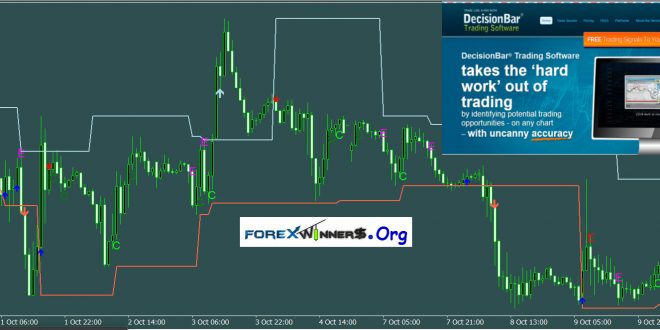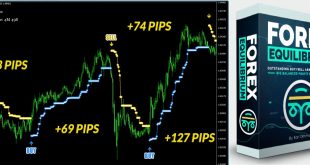Decision Bar Indicator – Profitable strategy for swing Daytrading
DecisionBar trading is real trading. As a DecisionBar Trader you won’t get bogged down looking at
countless indicators, which give diverging signals, or trying to evaluate arcane mathematical
relationships. As a DecisionBar Trader you will come to understand that successful trading boils down to accomplishing four things.
1) Identifying When a Potential Trade Exists.
2) Determining the Direction of the Trade.
3) Deciding if You Should Take the Trade.
4) Decide When to Exit a trade.
Our DecisionBar Strategy indicator identifies potential trades and the direction of the trade. It also helps you to determine when to exit a trade along with stops based on your own risk tolerance and market volatility.
Our Risk Oscillators will help you decide whether to take a trade along with any other methods or
indicators you wish to employ.
The DecisionBar Strategy indicator is our main indicator. It is very important that the strategy indicator be optimized for the instrument you are trading, as discussed in the DecisionBar Trading Manual.
The optimal sensitivity settings are different for each instrument you are trading and for each time frame. Knowing how and when to optimize these settings is the key to your success.
The sensitivity setting is an inverse setting. In other words, the lower the setting, the higher the
sensitivity. Higher sensitivity settings (lower numbers) will give you more trading signals. Lower
sensitivity settings (higher numbers) will give you fewer trading signals.
The default setting for the high and low sensitivity is 15/15. These settings are much too low for
today’s volatile markets.
Remember, the higher the setting, the lower the sensitivity. Settings of 30/30 are a good place to
start. For volatile stocks and futures with wide ranges, eMinis and especially forex you may have to go to 40/40, 50/50 or even higher.
The idea is to try to filter out random moves while picking up small to large trends.
Both the high and low sensitivity should usually be set to the same figure.
To determine the proper setting, look at your chart. If the indicator gives you too many signals and a lot of “whipsaws” (moves in and out of positions too fast for a lot of near break-even trades), then decrease the sensitivity (by increasing the sensitivity setting).
The lowest sensitivity setting that eliminates the whipsaws is the proper setting.
 Forex Winners | Free Download Downlod free trading sysrems , indicators and forex E-books
Forex Winners | Free Download Downlod free trading sysrems , indicators and forex E-books

